Amazon Rainforest Tribes: Indigenous Communities
The Amazon jungle spreads over 6.7 million km² and its the largest tropical rainforest in the world. It hosts countless species for millions of years. Humans have always been a part of this rich biodiversity as it is the ancestral home to more than a million of Amazon Rainforest Tribes.
These tribes populate their roots and weave through this ancient flora and fauna. From the high canopy to the darkened understory, they are as integral to every forested landscape as its trees. Cultures and traditions of these amazon rainforest tribes seamlessly woven into wilderness.
Each of them live by rhythms that are contrary since all of them are recount with their ancestors in numerous ways. They are communities that live from the integration with nature, their knowledge has been through generations in oral tradition, songs and old forest rituals.
Table of Contents
Their lives are woven into the fabric of the Amazon, a living tapestry that binds their stories, beliefs and customs with fragile threads to the world. The existence of these tribes is proof that humans and nature are a balance, one that our world no longer lets us believe in.
What is a Tribe?
Tribe represents a group of people who share similar ancestry, language, culture and traditions. Many groups spend their lives in tight-knit communities being together by their history and strong ties to the land. In the heart of the Amazon rainforest, tribes’ dwells in this thick blanket that sinks into towering chaos.
They serve as custodians to an ancient wisdom and heritage transcending age after generation. These communities have lived successfully for many centuries in one of the harshest environments in nature. They survive by mirroring the rhythms and cycles-creating indigenous lifestyles that are fluid with their environment.
Life Inside the Rainforest
Inside the Amazon rainforest, beauty and harshness coexist in equal measure. Its lush greenery is home to clans who have long-forgotten knowledge on the intricacies of its ecosystems. The Amazon rainforest gives these tribes food from hunting, fishing and foraging.
They get shelter in the towering trees and woven palms and medicine from the countless Amazonia plants that flourish underneath its canopy. Yet life in the jungle can be difficult. The dense Amazonia hosts many dangerous animals and the climate can be extremely hot and humid in rainy season.
Related Pick: Largest Rainforests in the World
Along with all this, sudden downpours could be there that will transform trekking paths into rivers. Although these challenges are tough, the groups have long ago conquered at balancing life within their environment. As they live through traditional means, allowing them to navigate and grow in this rainforest.
How Many Tribes Are There?
There are roughly 400 Tribespeople in the Amazon rainforest and each of them has a different language, culture, and tradition. Many of these Amazon rainforest tribes have had some type of contact with outsiders, while other remain isolated. They live in such remote regions that they rarely come into any sort of communication with the outside world.
All of these are remnants of the times, when very less contact was made with outsiders. While surviving in ways that have not particularly differ for thousands of years. The Amazon rainforest tribes boast a tremendous amount of diversity, each one adapting their way of life to the environment in which they live.
Top 5 Rainforest Tribe Facts
Here are the top 5 facts of the Amazonians;
- Cultural Diversity: Amazon has an estimated of 400 native groups with their languages, representing unique world viewable and culture.
- Sustainable Living: Slash and burn farming which is a principal mean of agriculture by many tribes enables the Amazon rainforest to renew after clearing.
- Shamanic Traditions: The oldest realm of local remedy for ailments is the shamanic tradition, where tribal shamans are healers and spiritual leaders in their village communities. They specialize as keepers of botanical knowledge using plants to treat sicknesses and communicate with spirits.
- Art and Symbolism: Tribal art has a strong tradition of symbolism, communicating spiritual ideas (such as religious beliefs), political power, and personal social status.
- Escaping Extinction: Despite the tribal ties to their natural habitat in the rainforest, most of them live with a sense of impending extinction. They suffer from deforestation and mining activities and intrusion by modern society at large.
The Yanomami People
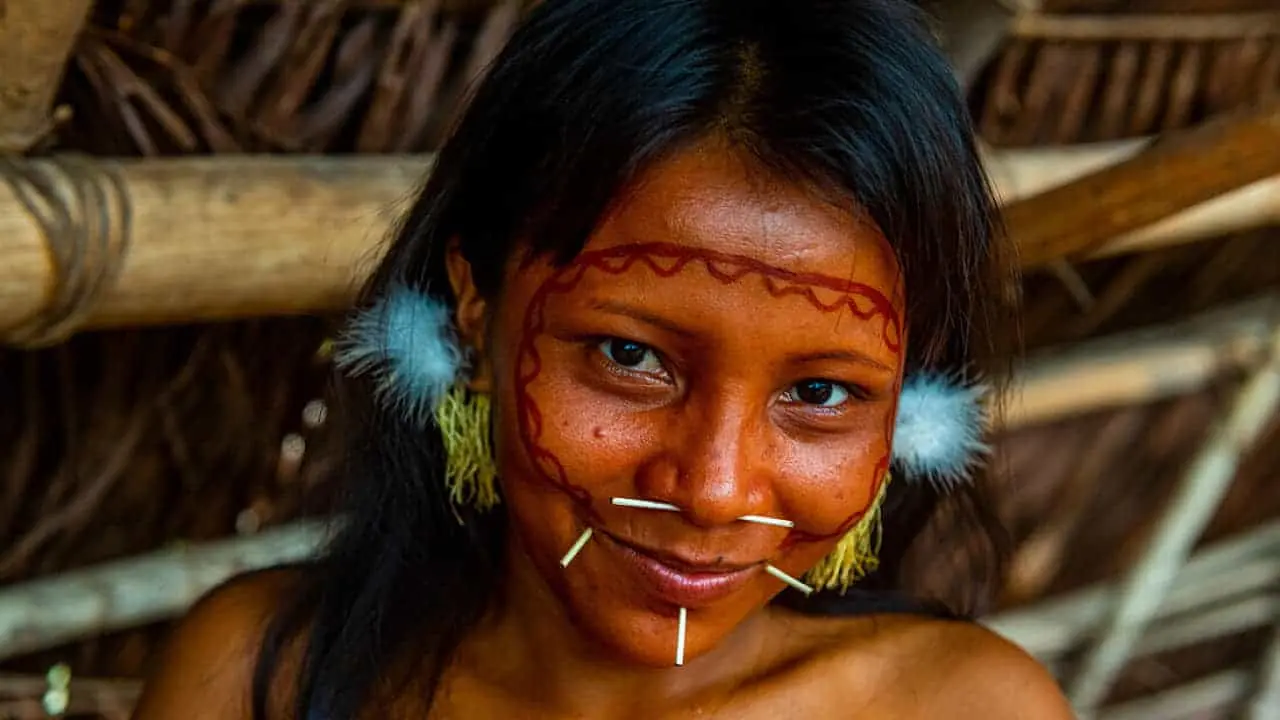
The Yanomami – one of the largest and best-known Amazon rainforest tribes with a history that stretches over thousands of years. It found primarily in the Amazon rainforest, and largely located Brazil and Venezuela.
History
The Yanomami have traditionally lived in communal houses called Yano, large circular buildings constructed with a rim of wood and palm leaves. This installation is one of a multitude, constituting an entire village where each Yano holds many families. They behave as societal cells merged into the whole with all members participating in hunting, gathering or agriculture activities.
The Yanomami have continually resisted, struggling to protect their traditional way of life from miners, loggers and settlers.
Religious Beliefs
The religious beliefs of the Yanomami pervade all aspects on their natural world. According to their traditional beliefs, they worship both good and bad spirits that live in the jungle. At the center of their spiritual life is shamanism, where shamans care for and protect it from dangers in order to have a decent existence. These religious authorities can communicate with the spirit world on behalf of their group to mend malady.
The Yanomami also hold that there are small anthropomorphic beings, xapiripë, who reside in the forest and help shamans locate specific spirits. These beliefs pass from generation to generation and greatly impact the Yanomami’s relationship with their environment.
Tradition
Yanomami life is ruled by tradition. They perform rituals from birth to death and each stage of life are all intertwined. The community bonded with their spirit world which is the rainforest. One of the most important traditional customs is reahu, a feast where all villagers (and sometimes other neighboring villages) come together.
It is for eating a hallucinogenic snuff called ebene, together. They eat with dancing and singing ‘kick off the reahu’, where Yanomami communicate to spirits. These reunions not only help keep families together, but they also serve as a means to revitalize the community’s ties to their forefathers and the wilderness.
Culture
In a lot of ways, the culture Yanomami is one that cherishes collaboration and respect for nature with an emphasis on reciprocity. They have an egalitarian social structure and make decisions in collective village meetings. Hunting and gardening duties divides with men predominately responsible for hunting, while women focusing on gathering.
They have a varied diet that includes wild game, fish, fruits and vegetables. They traditionally practice swidden agriculture. By burning down small portions of the forest to cultivate crops such as plantains, cassava and bananas. This results in the forest being able to regenerate and their food supplies staying sound.
Dress
Yanomami wear scant clothing where men may wear nothing at all or a simple loincloth, and women wear skirts of plant material. But the way their bodies are decorated says much about them, too.
Men and women both paint themselves with bright colored feathers, beads and body coloring from natural dyes. These intricate body patterns signify a symbolic and practical role in Yanomami life. They are use it for decoration, rituals, ceremonies and everyday practices using red urucum (achiote) or black genipapo fruit juice.
Traditional Food
The Yanomâmi have a primarily rainforest-based diet. Their diet includes hunting peccaries, monkeys, and birds as well fish from the countless number of rivers that pass through their territory.
They also harvest fruits, nuts and honey as well as have a garden where they cultivate plantains, cassava (yucca), and maize. Community-wide meals are another way of food sharing and social bonds strengthening.
Facts
- Dialects differ according to village; the Yanomami language is polysynthetic and complex.
- Up to 35,000 Yanomami live in the Amazon both across Brazil and Venezuela.
- Spirituality: Shamans have won the respect of Yanomami and are crucial to society. They are praised due to their practice as healers working with plants they find in the forest.
- Communal living: The Yanomami live in Yano structures, which typically house many families and have an emphasis on community.
- Resistance: Through their long history of resistance, many Yanomami have struggled to stop the pressures from outside. These pressures damage and sometimes destroy forests. This tribe works to diminish the impact so they can continue living life on their land with dignity.
Threats
The Yanomami are under threat on a number of fronts. Most notably it includes illegal gold mining, resulting in mercury dump in their rivers and playing havoc with the health. Their way of life is also under threat by deforestation and encroachment by the outside world. As their forest slowly dwindles. Moreover, diseases introduced by outsiders have lethal impacts, like measles and malaria to which Yanomami have little immunity.
The Tupi Community
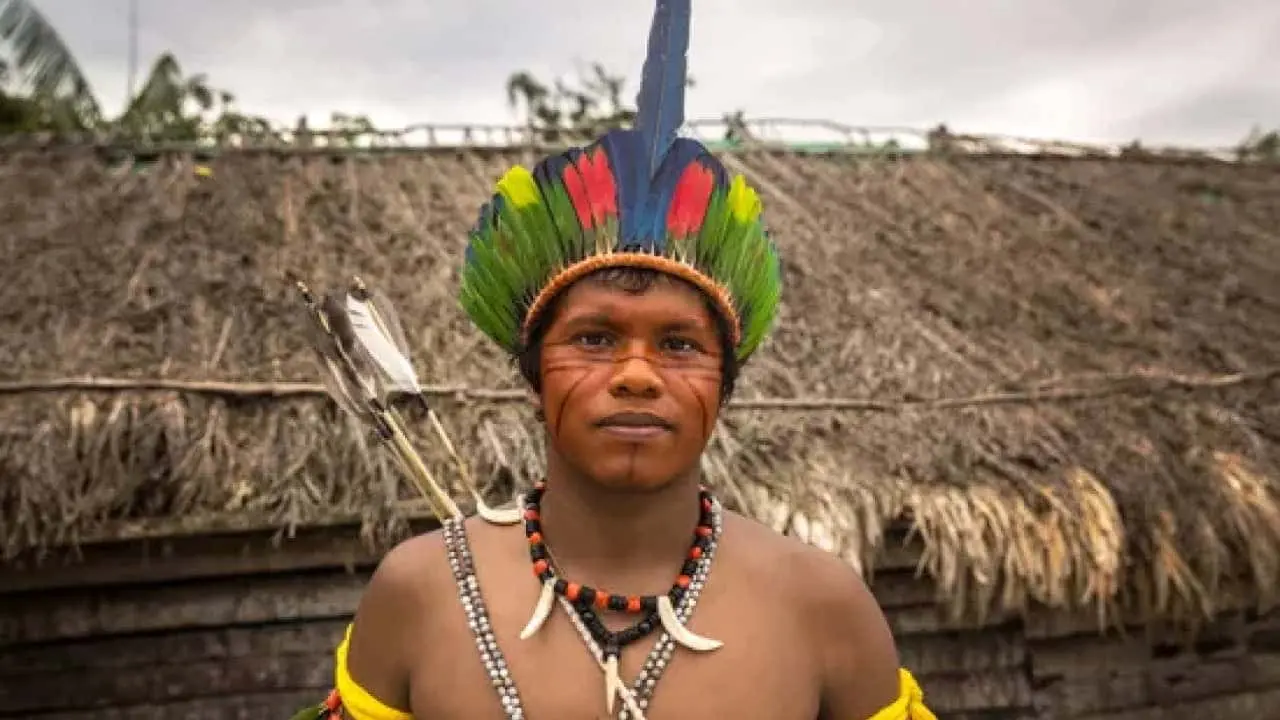
The Tupi were among the first tribes encountered by Portuguese colonizers in Brazil, who began arriving back in the 16th century. They were known at that time for covering long lengths of both the Brazilian coast and inland. Their past is defined by a profound tie to the land and an intricate social order. They were excellent agriculturists, raised crops of maize, manioc and sweet potatoes besides fishing and hunting.
History
The Tupi developed a money-free economy made up of garden, agriculture and fishing. To which they also added many commercially valuable products (tobacco in particular) that the Europeans loved. Today, the Tupi remain strong with still their culture and traditions alive.
Religious Beliefs
The Tupi had linked their lives to a rich spiritual universe of forces that connected nature and world inhabited by spirits. They had faith in great gods and spirits looking over the entirety of creation, watching everything from weather to producing crops.
Shamans, called pajé were an important part of Tupi society and acted as a key link between human beings and the supernatural world. The Tupi also had ancestor worship, they believed the spirits of their dead relatives held an influence on young ones. Rituals and ceremonies often included music and dance as well as use of ayahuasca.
Tradition
The Tupi tribe is a prominent fraction from the Amazon with a periodical history of violence and bloodshed. It has many ancestral traditions which endure across generations. Their lives are intrinsically link to these planetary cycles.
Much of their magic focused on the celebration or harnessing of the seasons and what is provided in a forest. Ceremonies have music, dance and storytelling as they include the ancestor’s spirits. The Tupi say that their ancestors, spirits of the jungle gods and goddesses reside among trees and rivers as well as animals.
Culture
The Tupi resided in communal societies and showed respect for the environment. Still, they are practical horticulturists, using slash-and-burn shifting cultivation. The Tupi are renown hunters and fisherman, with techniques transferring down from generation to generation.
Its language, Tupi-Guarani was widely influential across Brazil and is still in use by many of their descendants. The Tupi are social animals and live in large communal houses referred to as “malocas“. A maloca would house several families at a time. It chiefly serve both pragmatic purposes by facilitating kinship organization while also being the focal point of spiritual life.
Dress
It is not uncommon for the men to wear little more than loincloths of plant fiber, while many women dresses in skirts woven from palm leaves. Tupi dress is not complete without the body paint, which are elaborative designs in natural dyes from the jungle.
They are more than decorative, as they frequently represent an individual’s place in the tribe, accomplishments or readiness for certain rituals. Also, headdresses and adornments are made of feathers (mostly from parrots or other birds with colorful plumage) so it gives them even more colors.
Traditional Food
Most of the Tupi tribe live on a plant-based diet, which mirrors what is available in this tropical forest. They grow a wide variety of staples such as cassava, corn, and sweet potatoes. Specifically, cassava – an important food crop from which a starchy flour “farinha” derive which is central to the diet.
The Tupi hunt and fish to supplement their diet, using bows, arrows and fishing nets. The forests are full of fruits like açaí, guava and papaya packed with vital vitamins and nutrients.
Facts
- The Tupi were among the first indigenous peoples to have contact with European colonizers, which would have serious implications for their society over half a millennium.
- They make complex pottery including geometric designs used in everything from utilitarian ware to sacred ceremonies.
- The Tupi have therefore made a particular historical and genetic contribution to modern floors. In one study almost 40% of the population developed direct descent from people identified as Brazilian Indians.
The Kayapo Indigenous People In Brazil
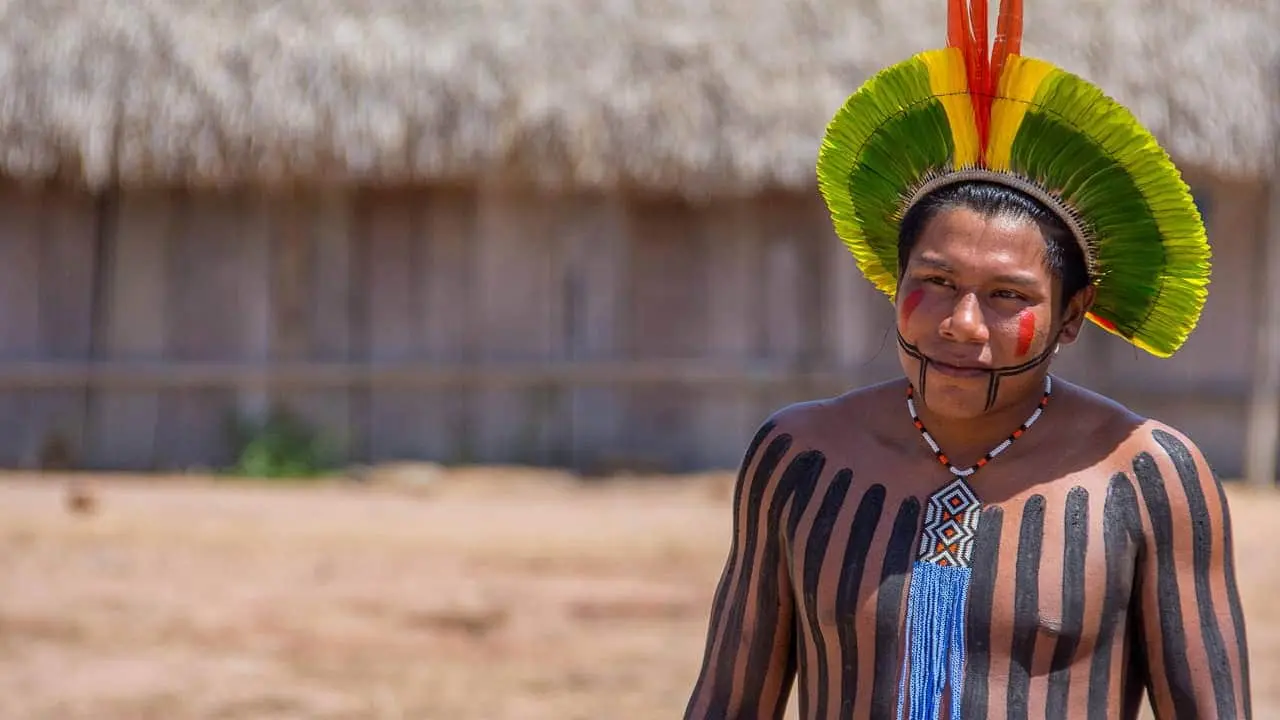
Located in the central forest region, the Kayapo are a famous colonization and are deep rooted with their originally home landed territories. They have a history of using their technical powers to defend themselves against outside groups, mostly in the form of miners, loggers and settlers.
History
With a proud tradition of warfare, the Kayapo used to be fighters unsurpassed in the region. While they are known as warriors, the Kayapo have also proven to be master diplomats and negotiators. They have been negotiating with both the Brazilian government and environmental organizations in order to maintain control over their lands.
Religious Beliefs
The Kayapo identify strongly with the landscape and its natural resources; their spirituality is in a reverence for nature. They worship spirits, which they believe to be alive in the rivers and forests of heaven-protective clans.
In Kayapo society, Shamans are the medium between the physical and spiritual worlds. They perform rites for the welfare of its tribe, communicate with spirits and cure illnesses.
This myth-heavy culture has even produces the Kayapo origin story that is passes down through generations. It’s a narrative explaining where the world came from, how it was done by apes and a nice flooding of Biblical epic proportions drained away into Lake Bai!
Tradition
They define traditions in their society as they are warriors and guardians of the jungle. Their major rituals began with the young boys, in facing excruciating challenges that will test his strength, endurance and bravery. This rite is typically celebrated with more or less pompous receptions featuring dancing, singing and banqueting.
The Kayapo people are also famous for body art, such as lip plates and ear plugs. Men wear them to demonstrate their wealth or bravery. Furthermore, women are respectful to the tribe and they fulfil a significant part of the life of peoples by practicing agriculture and bringing up children.
Culture
The Kayapo life is one in which every person has a job or role and if that individual does not do its part their tribe wouldn’t survive. The Kayapos are a masterful group of agro-extractivists, who use slash and burn farming strategies that allow the forest to regenerate itself.
In addition, they are highly skillful hunters and gatherers, who know which plants or animals can be there in the immediate area. In villages, the Kayapos live in circular communities where houses are around a central plaza for social gatherings. The decision-making is done together and leaders chosen to lead by people.
Dress
The Kayapo wear elaborate dress that is unique to their group; both males and females are dress up with colorful beads, feathers and body paint. Kayapo are also famous for their large feather head-dresses and they use these especially in ceremonies or other important occasions.
The colorful pattern comes from body painting with urucum (anatto) seeds and genipapo fruit. The women wear bark-cloth skirts and sometimes decorate their upper bodies using body paint with patterns. These patterns indicate where they come from in terms of marriage or parental clans.
Traditional Food
Their diet is broad, including all kind of fruits and vegetables both wild or cultivated, fish from river shared among different Kayapo groups. They grow manioc, sweet potatoes, and bananas as a staple of their diet. Hunting and fishing are an important source of protein, the Kayapo make their own bows, arrows, spears, and traps to catch animals.
They also collect wild honey, nuts and edible insects from the forest which are considers as delicacies. Not only are plants an important part of their diet, but the Kayapo know much about medicinal properties in nature to heal them.
Facts
- The Kayapo have become internationally known for their innovative uses of technology. Such as incorporating satellite imagery and GPS to help track and safeguard their territory against incursions.
- These are two causes for which they make a strong case. The first is their concern about the Amazon, and how they work with NGOs. In order to alert people around world that this enormous region should be under protection.
- The Kayapos with their fascinating social structure and unique customs have drawn attention of anthropologists and researchers from world over.
The Awá Indians of Amazonian Brazil
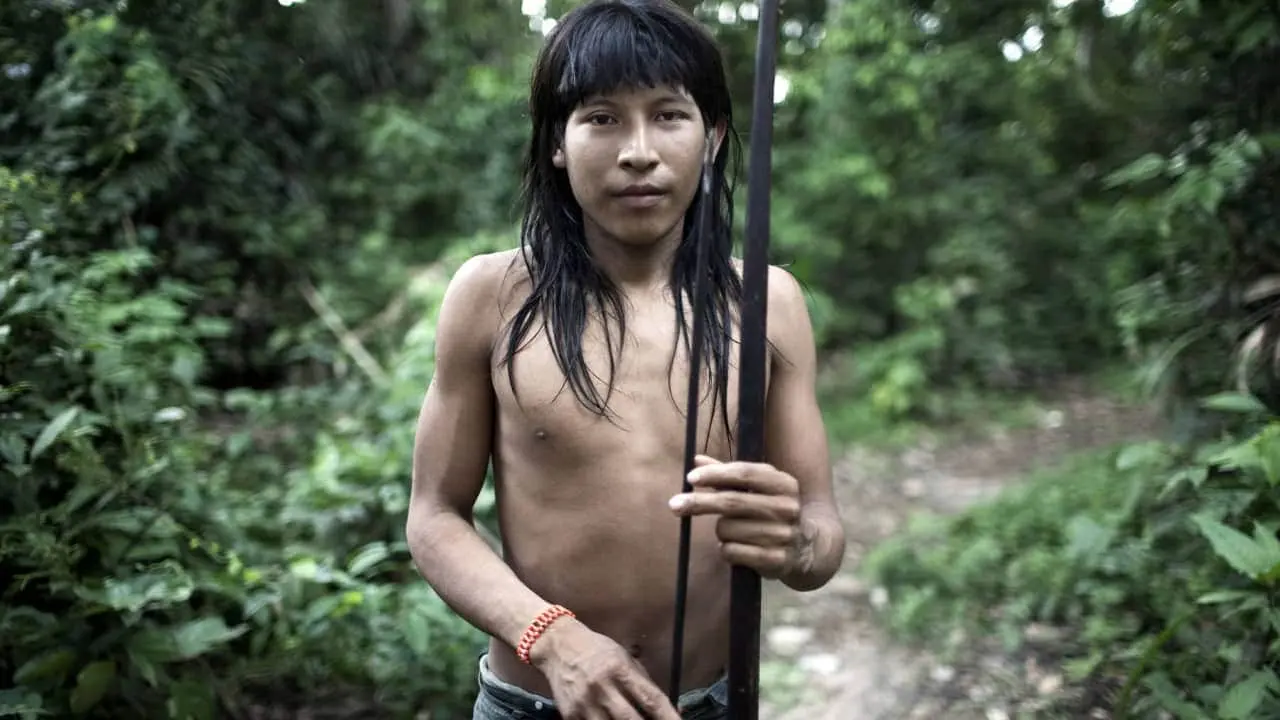
The Awá are one of the Earth’s last nomadic Amazon rainforest tribes. Their story epitomizing both a deep reliance and relationship with the lush forest and threats from the outside world. In the past, they used to live in small nomadic groups traveling through the forest for food and materials.
History
The tribe has a history of seeking to maintain its isolation from the outside world. But this is more difficult as vast swaths of the Amazon jungle are cutting down or burn by loggers and soy farmers. Nonetheless, with so many forces pressing on them, the Awá have succeeded in remaining mostly true to their traditional ways. They are confronting the situation even after widely regarded as one of the most threatened groups on Earth.
Religious Beliefs
For the Awá, their spiritual belief system is tightly woven with the green web of existence. They believe that the spirits of their ancestors live in all animals, plants and rivers. They believe it exists in this part of the Amazon River basin and these spirits guide them through life.
The role of shaman is central to the Awá religion and they play an important part in maintaining contact with these spirits, performing rituals for tribal survival. The Awá also have a wealth of oral history, with stories about the world’s beginnings, their own place in it, and values like harmony.
Tradition
The center of traditional Awá life is their landscape – a place that enables them to maintain profound connections with nature through living as nomads. The Awá are expert hunters, who use bows and arrows to hunt while also collecting fruits, nuts, and other edible plants.
Nomadic by nature, these communities have rich knowledge of the tropical forest that has been in generations. Awá culture includes many rituals and ceremonies that often function around the fire where stories are there to tell. Also, songs are playing to pay tribute to their ancestors and the spirits of woods.
Culture
The Awá, also known as the Guaja, are one of the last nomadic Amazon rainforest tribes. They live in sync with the nature that surrounds them with harmony among a deeply rooted cultural life. Hunter-gatherers, the Awá depend on its forest bounty to survive. They are the ultimate environmental geniuses, perfectly molded to move with food and shelter as seasons change.
Top 13 Stunning Birds of the Amazon Rainforest
Discover the stunning birds of the Amazon, from vibrant Toucans to graceful Macaws. Explore their beauty, unique behaviors, and the vital role they play in the rainforest ecosystem.
They respect the land along with all of its creatures by understanding that each animal and plant is a relative. The Awá honor their ancestors and believe that they are guiding them in the lush forest. Their reverence for the spirits of the forest and all its denizens reflects this spiritual union they share with their homeland.
Dress
The Awá are known for wearing simple, practical clothing made from materials that the tropical forest provides. They wear beautiful minimal clothing due to humidity with ornaments made by feathers and beads and bone. These decorations are not only about beauty but have great meaning, they represent the bond with nature and fairytale spirits of old forest.
It is also very common among the Awá to paint their bodies with pigments of natural origin. They make their dresses using plants and minerals by mixing them with small amounts of bone glue. It has spiritual connotations and used for different rituals or ceremonies. Their body paint will often be the integration of their identity, social rank and relationship with nature.
Traditional Food
As diverse as the tropical forest is, so too is what the Awá eat. They depend upon the hunting, fishing, and gathering of food. Proteins typically come from monkeys, birds, fish and other small mammals on land. Awá also collect a variety of fruits, nuts and roots, they gather bananas and coconuts as well as hunt for wild honey.
Their deep understanding of the moist forest gives them knowledge on plants and roots, which ultimately serves similar function as vitamins for their health. The food is not only for sustenance, it serves to bond people even more through the bonding of communally shared meals.
Facts
- Approximate number: The Awá tribe was one of the smallest and most threatened groups in Amazon with an estimated population around 350 individuals.
- Nomadic lifestyle: They are nomads depending on tropical forests as their life-support sources.
- Language: Language spoken is Awá, part of the Tupi-Guarani linguistic family.
- Threats: The Awá are at extreme risk from deforestation, encroachment by settlers on their land and diseases introduced to the reservation.
The Last Tribes of the Peruvian Amazon
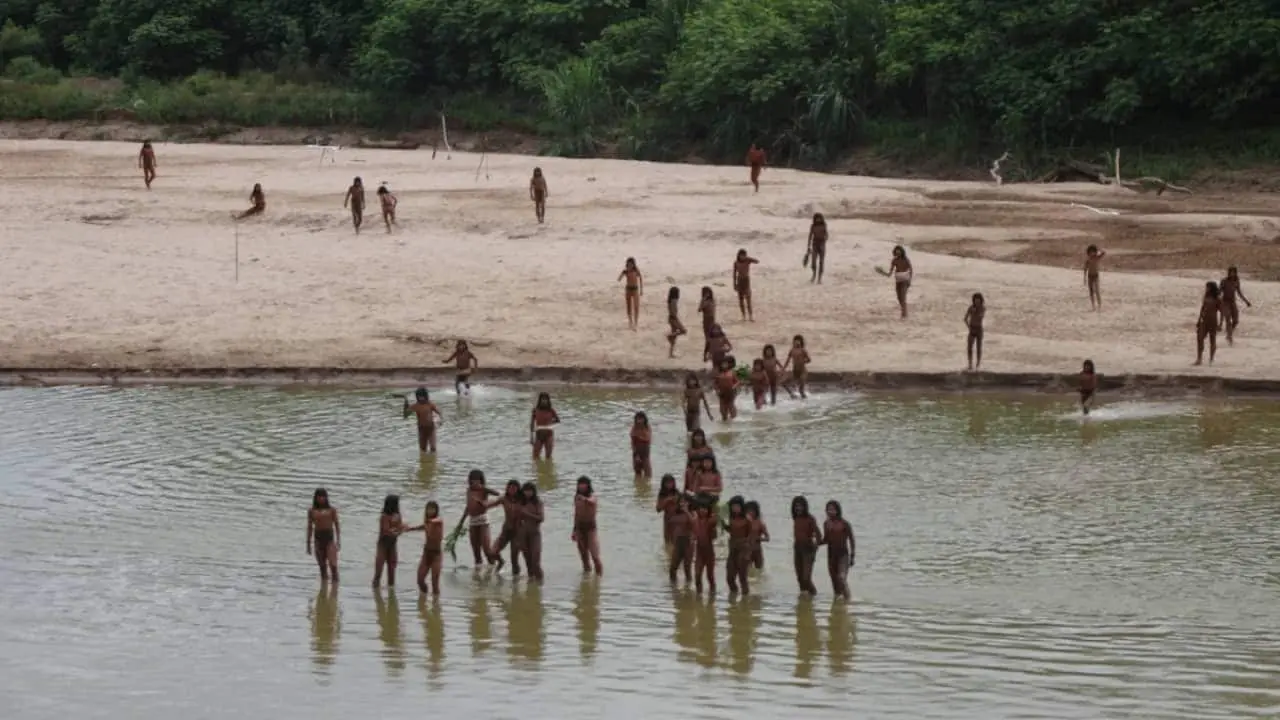
The Peruvian Amazon is rich in biological and cultural diversity as one of the most biodiverse areas on earth inhabited by people, still living with little contact from the outside world.
History
The history of the Peruvian Amazon has several specific aspects such as colonization, a mosaic of indigenous tribes coexisting and conflicting at times. These groups lived isolated for thousands of years and fashioned their lives around these forests. They mold themselves in unique culture over generations after many centuries.
The 16th-century advent of Europeans resulted in drastic change, introducing diseases; forced labor and attempts to stimulate the every Catholic faith amongst local peoples. But despite these challenges, some tribes have been able to hold onto their cultural traditions for hundreds of years.
Cultural Life
The tapestry of cultural life in the Peruvian Amazon is rich with traditions from countless indigenous tribespeople. Every tribe has its own language, rituals and social system but all of them have deep relationship with verdant forest. The tropical forest is not just set the stage for life, in fact, it helped shape every aspect of their life.
They practice rituals and ceremonies that are dependent on the natural cycles of the forest. Such as the rainy season, or hunting for instance. Music, dance, and oral storytelling traditions are essential to cultural life, as a way of transferring knowledge across generations.
Government and Society
When it comes to government and society, the Peruvian Amazon is a tapestry of various tribes. Most communities live along small family groupings with an elder at the head that others turn to for guidance. Because, the elders gained knowledge and firsthand experiences
They make most of the decisions with a high level of consensus and to benefit the community. In the last few years, some nations have set up organizations/councils. They act as representative to interact with the Peruvian government or others outside their tribe. The clans are wary of external interference and show preference to living in their own clan with their traditional style.
Economy
The Peruvian Amazon is an economy mainly of subsistence, hence the clans hunt, fish and make agriculture to support themselves. Common traditional practices are still maintained, such as slash-and-burn agriculture in which small plots of forests are cleared for farming.
Such operations are sustainable at a small level and already in the knowledge of the forest ecology that are closely present within groups. Over the past years, some groups have ventured into this wider economy market for selling crafts, ointments or herbal medicine. They also offer eco-tourism, which is helping them make an extra income by also protecting their cultural heritage.
Language
The Peruvian Amazon hosts a number of languages, many only spoken by one or two remaining communities. Typically, these languages are unwritten, and tradition dictates that they be orally handed down from one generation to the next.
They also contain a wealth of vocabulary pertaining to the natural world, reflecting the tribes’ intimate understanding of jungle life. Yet a significant number of these languages are spoken with fewer and fewer speakers. As each active generation assimilate to Spanish (or another dominant language) during their linguistic socialization.
Religion
One unique aspect of religion in the Peruvian Amazon is its rooting in nature. The majority of the communities follow animism, where they presume there to be spirits in the trees, rivers, animals and even the rocks. Religious life is centered around shamans, who serve as intermediaries between the physical and spiritual realms.
Using their knowledge of plants and an array of rituals, they administer care to the sick and mediate with spirits. Their religious ceremonies are intricate, with music, dance and the aid of hallucinogens such as ayahuasca used to achieve visions and communicate with spirits.
The Dangers to Tribes in Amazon Rainforest
Amazon rainforest tribes are at great risk as a number of existential dangers loom over them. These threats are based upon outside forces at the expense of people who inhabit this. To the bands, these are more than just threats to their environment and health. Such threats encompass a spiritual as well as cultural erosion in which modernization is subsuming layers of ancient rites and beliefs.
Colonization
Despite being seen as a thing of the past, colonization is still something that Amazon rainforest tribes face even today. These outsiders become carriers of diseases; that the bands have not developed immunity against, causing extinction in populations.
The suffocation of traditional ways by overriding foreign cultures and religions that eventually result in the disappearance of languages, customs, and ancestral memory. Colonization is neither a thing of the past nor something that happened only on reservations.
Across the border from Brazil in eastern Venezuela, gold deposits were found on Indian lands, causing massacres that killed over 400 Yanomami Indians. Their forest, the place that had once been home has become a battlefield as they work to keep their land free of those who would seek to claim it for monetary gain.
Deforestation
The most urgent and obvious threat to Amazon rainforest tribes is deforestation. The forest that has provided for the groups for centuries is devastated when loggers come to cut down the trees. Agriculture expansion by the outside world come along to worsen the situation. But as the forest disappears, so do means of sustenance and survival such as food, medicine and shelter. Thus, two options are left, whether pushing this semi-nomadic tribe to relocate ultimately or face perishing.
Deforestation systematically ravages the pristine wilderness, to which thousands of species are adapted. It then organizes its armies into systems that efficiently extirpate forest organisms useful for human economic purposes.
Explore More: Explore the Impact: Effects of Deforestation on Our Planet
For the Kayapo – famously ferocious in their resistance to outside encroachment – the bulldozing of trees was a direct assault on their world. The forest is not only a home, it’s the place where spirits of their ancestors are living. Those trees fall, as does the links to their past, leaving the Kayapo to fight for the survival of their culture and heritage.
Why is it Important to Learn these Tribal Facts?
An understanding of tropical forest communities is important not only for learning about the cultural diversity in our world, but also to underscore how much we stand to lose. The rainforest is thought to hold millions of species that include many still unknown.
Those who have inherited unique ways from traditions must share what they know if we are going to save such irreplaceable biodiversity hotspots. They have little to show after centuries of European colonization and exploitation, but their traditional practices for sustainable living offer valuable lessons. Especially now that the rest of world is struggling with climate change as well.
Furthermore, it also helps one understand the trials and tribulations of these groups, which in turn instills a better understanding as to why they need their rights protected. Here we see the resiliency and power of indigenous cultures in keeping with their beliefs despite countless centuries of colonization. To know these communities is to not only respect their legacy but also participate in the conservation of both worlds, for saving these ancient cultures from extinction.
Conclusion
The tribes in Amazon rainforest proof that cultural heritage develops and thrives in times seemingly stacked against society. The deep-seated love for mother nature they seem to have always encompassed. Their encyclopedic volumes of forest facts passed down generation after generations. It holds the iron-willed determination that the modern world could do very well in paying an equivalent or more attention.
Their very existence is threatened by the ever-growing challenges presented through colonization, deforestation and cultural erosion alike. These nations should be recognized with respect more than ever for their cause of preserving and protecting nature.
These teachings of the Amazon rainforest tribes are not only their heritage but a gift to all, an insight into what is almost forgotten in our modern western streams. They teach us that we must change and return again to harmony with nature. If we understand and protect these forests from deforestation, it would secure their future beyond our own eventual extinction and the knowledge they possess will also continue through us.
The Amazon is not a commodity to be traded, but it is an environment filled with lofty trees and histories that ought to remain hidden. The forest itself laying deep inside our soul as it carries roots from different times, calling us: back.
Now, it is up to us to protect and honor the mother nature, for the tribes who live there but more importantly, all of humanity.
Read More: The Role of Deforestation in Climate Change
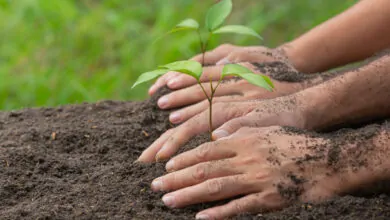
I recently found out I have amazonian indigenous in my DNA and live in the US. Is there a way to find out what tribe my ancestor came from?
Yes, you can trace your ancestral tribe through DNA testing services that offer Indigenous American ancestry insights. They may identify genetic markers associated with specific regions or tribes. However, to pinpoint a particular Amazonian tribe, further research, family history, or specialized genealogy services would likely be needed.